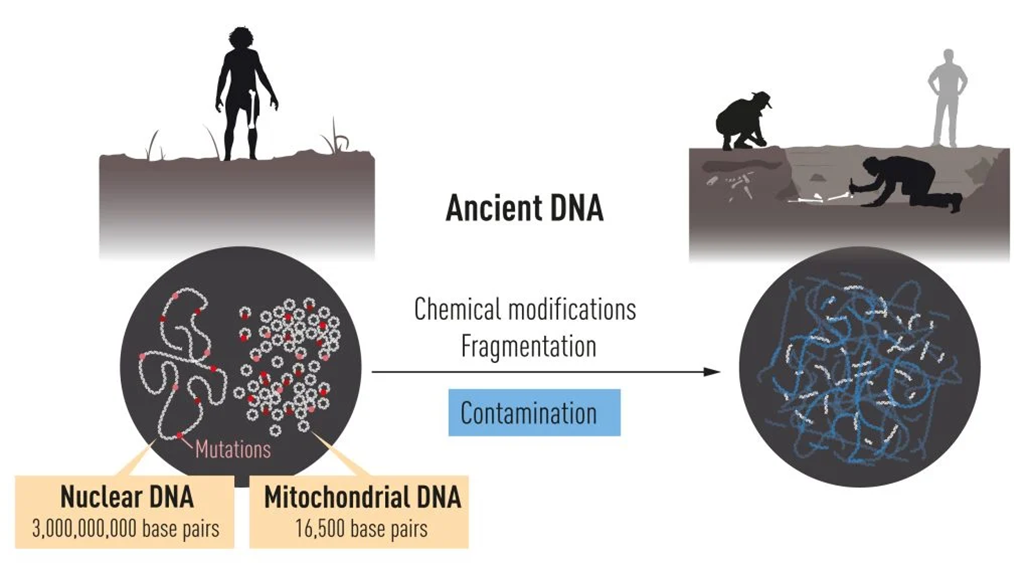Examining Neandertal and Denisovan DNA wins a 2022 Nobel Prize
Svante Pääbo figured out how to analyze the genetic material from these human ‘cousins’

Svante Pääbo won the 2022 Nobel Prize in physiology or medicine. He developed ways to study the genetics of our hominid relatives, Neandertals and Denisovans.
© Karsten Möbius
Share this:
- Share via email (Opens in new window) Email
- Click to share on Facebook (Opens in new window) Facebook
- Click to share on X (Opens in new window) X
- Click to share on Pinterest (Opens in new window) Pinterest
- Click to share on Reddit (Opens in new window) Reddit
- Share to Google Classroom (Opens in new window) Google Classroom
- Click to print (Opens in new window) Print
By Tina Hesman Saey and Aimee Cunningham
What makes humans unique from our extinct relatives? For pioneering a new field of science to help answer this, Svante Pääbo will take home the 2022 Nobel Prize in physiology or medicine.
“Humanity has always been intrigued by its origins,” notes Anna Wedell. “Where did we come from and how are we related to those who came before us.” People especially wonder what makes us different from related species that went extinct, she says. Wedell is a member of the Nobel Assembly. It’s at the Karolinska Institute in Stockholm, Sweden. This group announced Pääbo’s win on October 3.
Pääbo is a geneticist who works at the Max Planck Institute for Evolutionary Anthropology in Leipzig, Germany. In 2006, he worked out how to extract and analyze DNA from ancient bones. That led to uncovering small genetic differences between humans and their extinct human relatives.
Before this work, scientists learned about human evolution largely by poring over bones and artifacts. But studying the surface of those relics couldn’t point out gene changes — ones that allowed humans to thrive while other ancient hominids went extinct.
In fact, getting DNA from ancient bones was once thought impossible, notes Leslie Vosshall. She’s a neuroscientist at the Rockefeller University in New York City. She’s also chief scientific officer at the Howard Hughes Medical Institute. DNA breaks down over time. That’s why many scientists thought that there would be none left in fossils tens of thousands of years old. Over that time, the ancient DNA also might have been contaminated. It could have been tainted with the genetic material of other organisms — from microbes to living people.
Yet Pääbo managed to stitch together tiny bits of Neandertal DNA so that they could be read. He started with DNA from a Neandertal’s mitochondria. Those are the energy-generating structures in cells. After that, he assembled a complete genetic instruction book — or genome — for one Neandertal. Then more.
Over the years, Vosshall watched as Pääbo presented snippets of DNA from old bones at science meetings. “Nobody believed him,” she says. “Everyone thought it was contamination or broken stuff” from living people. “That he was able to get [a full genome] of a Neandertal was viewed, even up until he did it, as an absolutely impossible feat.”

New field of science is born
By studying ancient DNA, Pääbo and his team have made surprising discoveries about human evolution. For instance, they learned that humans and our extinct cousins, Neandertals, had children together. That shocked even scientists who had sought signs of interbreeding. Evidence of that mixing still shows up in many people today.
A finger bone he studied revealed a previously undiscovered extinct human relative called Denisovans. Like Neandertals, Denisovans interbred with humans.
DNA passed down from those extinct ancestors can still affect our health. For instance, gene variants inherited from Denisovans have helped some humans adapt to living at high altitude. But some Neandertal DNA has been linked to a higher risk of developing some diseases, including severe COVID-19. Pääbo’s work also has delved into tiny gene changes that may have influenced how our brains evolved.
Other researchers have also use Pääbo’s techniques. In one case, they used them to study the evolution and domestication of cats. Others helped used those techniques to show how ancient humans moved around the world.
When he learned of his win, Pääbo said that thought it was an “elaborate prank” by the people in his research group. But he soon realized it was the real deal. “The thing that is amazing to me,” he said at a news conference later that day, “is that we now have some ability to go back in time and actually follow genetic history and genetic changes over time.”
Pääbo will take home prize money of 10 million Swedish kronor. (As of October 3, that amounts to roughly $895,000.) And he’s not the only one in his family to win a Nobel. Forty years ago, Pääbo’s dad, Sune Bergström, shared the Nobel Prize in physiology or medicine.







